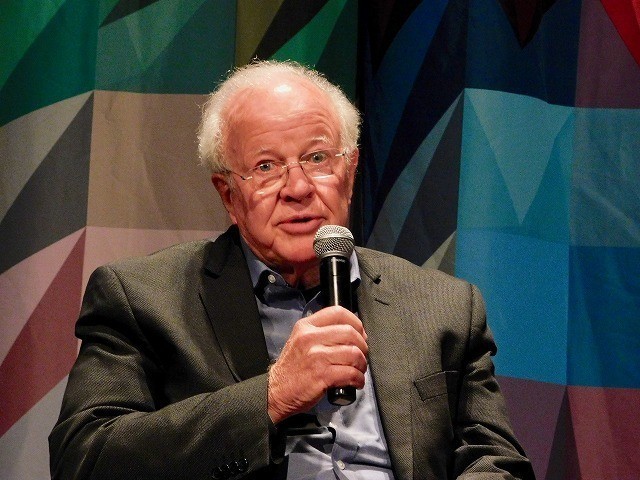
Special-effects genius Douglas Trumbull, 79, died in Albany, New York on Monday, of complications from mesothelioma.
Though his name was not a household word among the general public, he left a major creative input on many of the iconic sci-fi films of the past half century, including 2001: A Space Odyssey, Close Encounters of the Third Kind, Blade Runner, The Andromeda Strain, and The Tree of Life.
What is remarkable about his accomplishments is that he painstakingly concocted many of his stunning visual effects without the benefit of today’s state-of-the-art computer graphics tools. Among his creations were the Star Gate sequence for 2001, and, in the first Star Trek movie — the docking sequence aboard the Enterprise and Spock’s spacewalk. He crafted the illusion of fireballs exploding over Los Angeles from unreleased footage he had shot a decade earlier for Michelangelo Antonioni’s Zabriskie Point.
For his efforts, he was nominated for a visual-effects Oscar three times: for Close Encounters of the Third Kind, in 1977, Star Trek: The Motion Picture in 1979, and Blade Runner in 1982. In 1993, he won a Scientific and Engineering Award from the Academy for his Showscan Camera System.
In 2012, he won the Academy’s Gordon E. Sawyer statuette for lifetime contributions to the art.
Trumbull was born in Los Angeles in 1942. His mother was an artist and his father had worked on special-effects projects for The Wizard of Oz, including the flying monkey and talking-tree scenes. The elder Trumbull had even devised a contraption to control the Cowardly Lion’s tail with a fishing rod and monofilament wire.
Douglas Trumbull’s first major break came in 1964, when the 22-year-old was commissioned by Graphic Films to create a diorama for its film To the Moon and Beyond, shown at the New York World’s Fair that year. Among the visitors impressed by his work were Arthur C Clarke and Stanley Kubrick, who hired him to do preliminary designs for their work-in-progress 2001: A Space Odyssey. Kubrick and Trumbull had a falling-out when Kubrick alone was credited with the special effects, winning an Oscar in 1969. The feud intensified in the 1980s when Hewlett-Packard published an ad crediting Trumbull, which prompted lawsuits from Kubrick and MGM, and the ad was withdrawn. Despite their disagreements, Trumbull attended Kubrick’s funeral in 1999, acknowledging that the director had been a major force in changing his life.
Trumbull also directed two sci-fi features on his own: Silent Running (1972), starring Bruce Dern, and Brainstorm (1983), featuring Natalie Wood in her final film appearance. In his later years, Trumbull worked on refining an immersive cinema concept he called the “Magi Pod.” In 2018, he appeared in a documentary about him entitled Trumbull Land. He was also working with Mike Medavoy on a documentary about the creation of 2001: A Space Odyssey, and with John Sayles on a sci-fi feature Moons Over Enigma.

